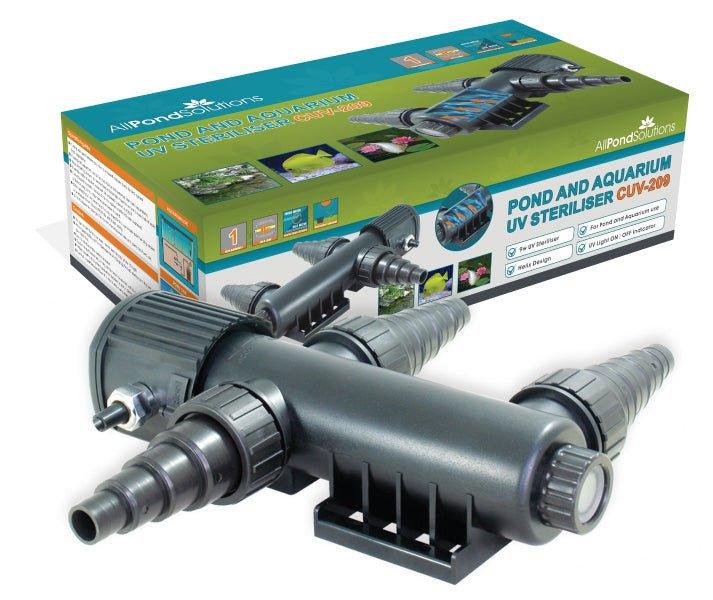How to remove algae from my aquarium
As an aquarium owner, you will be aware of the seemingly never ending battle against algae growth. Unfortunately algae can be an inevitable problem in your fish tank, but there are steps you can take to get rid of algae and help to keep on top of it.
What is algae?
To put it simply, Algae is a green plant that appears in a variety of colours and forms, and grows within your fish tank. It attaches itself to the surfaces of items and the glass of your tank. In the right amounts, algae can provide a good food source for your fish; however, if there is too much of it, it can cause water pollution and become unpleasant.
Clean your aquarium
Algae has a habit of building up on your aquarium’s acrylic or glass sides which can make for an unsightly tank.
An easy way to remove algae from your glass is an aquarium scraper and some elbow grease. The scraper will remove large algae deposits, as well as daily film algae, leaving you with a clear view of your fish. But make sure to get into every nook and cranny!
Algae will also collect in your substrate, so it’s important to clean it regularly. This can be done easily using a siphon.
Water Changes
Never underestimate the power of a good water change! Clean water is a staple of good aquarium care, so if your tank becomes polluted it will help to perform a water change. Regular water changes can help dilute and carry away unwanted algae nutrients that build up in your aquarium. We suggest carrying this out weekly as part of your maintenance routine as going too long between changes may increase your chances of an algae outbreak.
Algae Eaters
Some fish thrive off of algae in tanks, making it a great source of food for them. If you have the tank capacity, you may think about introducing a few new helpful tank mates.
There are many varieties of fish and invertebrates that can be added to your tank that may help toward controlling algae growth. The most common type of fish would be a Pleco, however some can grow very large which may not be a suitable option for most fish keepers. We would suggest a Bristlenose Pleco, they’re hardy, easy to keep and don’t grow too large (12.5cm). Most importantly they are great lovers of algae.
Catfish such as the Dwarf Sucking Catfish; Otocinclus, are another great choice as they are largely compatible with all species and can approximately grow up to 4.5cm making them ideal for smaller fish tanks.
If you’re not looking to add another fish to your tank, an algae eating snail could be a good alternative. A Batik snail; Neritina SP, is a great choice for most tropical tanks for their algae loving nature and they’re also easy to care for making them suitable for beginners.
But please make sure you do your own thorough research beforehand to make sure your tank is the best and most compatible environment for these fish.
Keep in mind that algae eaters are not miracle workers and some algae may grow faster than can be eaten meaning you may have to use a combination of methods to completely remove algae.
Algae Treatments
Sometimes natural methods of algae removal just won’t cut it, that’s where algae treatments come in. An algae treatment is a solution placed into your fish tank that will eliminate algae. This method may not be as gentle as cleaning and adding new fish, but it is fast acting and effective.
Lighting
You can reduce excess algae by controlling the amount of light your aquarium gets by making sure your tank is not in direct sunlight and putting lights on a timer, as an extended light cycle can promote the growth of algae.
Do not over feed fish
Make sure you’re not over feeding your fish! If you find yourself in a constant cycle of returning algae it may be time to consider cutting down on the amount you feed your fish. Food that goes uneaten will settle into the substrate and start to break down. Organic material left in the tank provides essential nutrients perfect for algae to thrive on. Try only feeding your fish with enough food to last a few minutes, anymore will lead to excessive waste and therefore the risk of more algae.
Filters
A filter within your tank will keep your water clean and will ensure that toxic level remain low making the probability of algae growth lower. Just make sure you clean and change the filter media regularly.
UV Sterilisers
One of the best ways to tackle algae is by using a UV Steriliser as part of your filtration system. The UV Steriliser will destroy the bacteria as well as help to reduce the spread of free-floating algae. It is not harmful in any way to your fish or other inhabitants of your aquarium, making it a great choice for removing algae from your aquariums.
However it’s important to note that a UV Steriliser will not eradicate the problem completely on its own. A UV steriliser is not a replacement for good biological and mechanical filter, which is still necessary to physically remove algae from the water.
